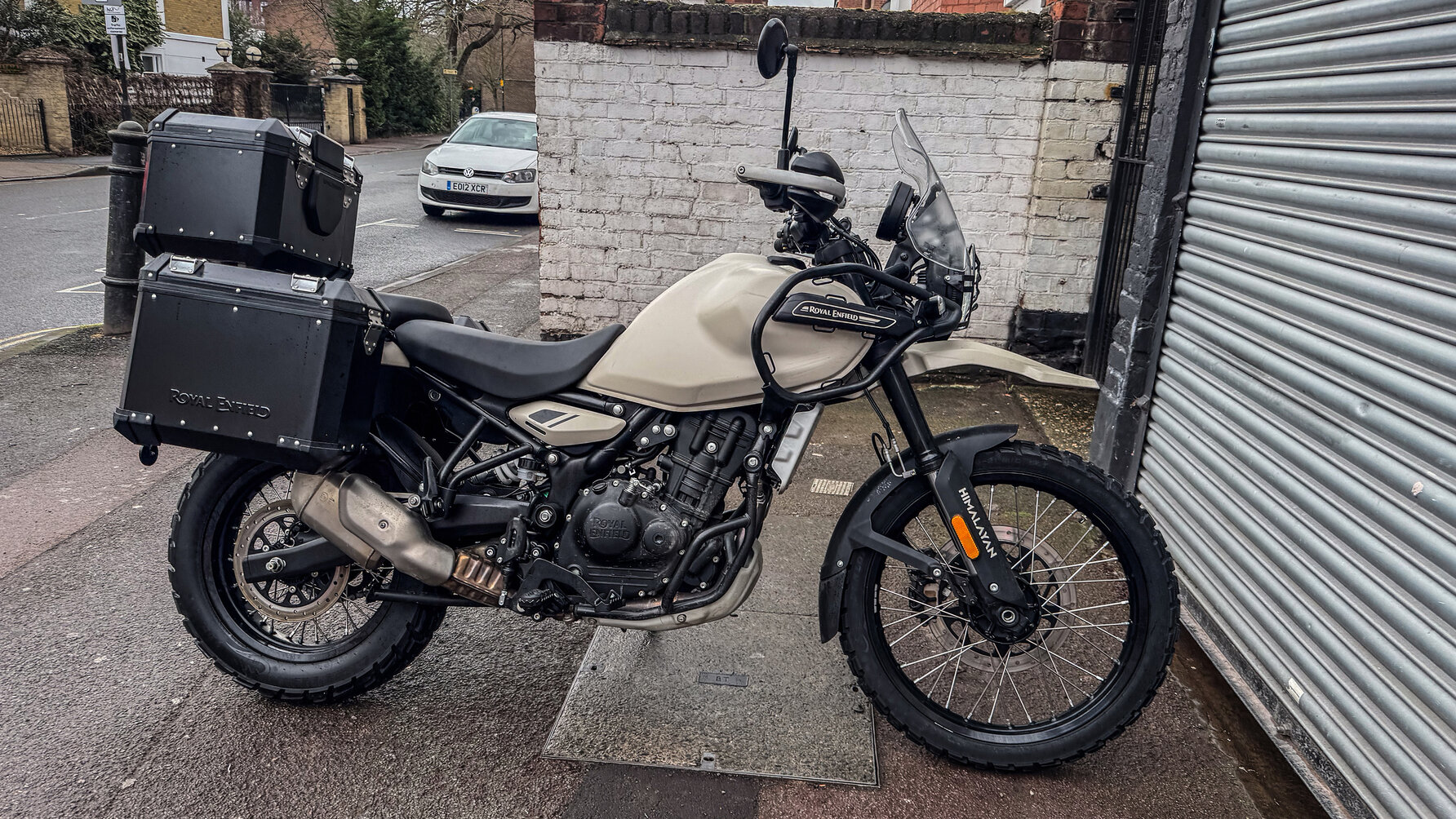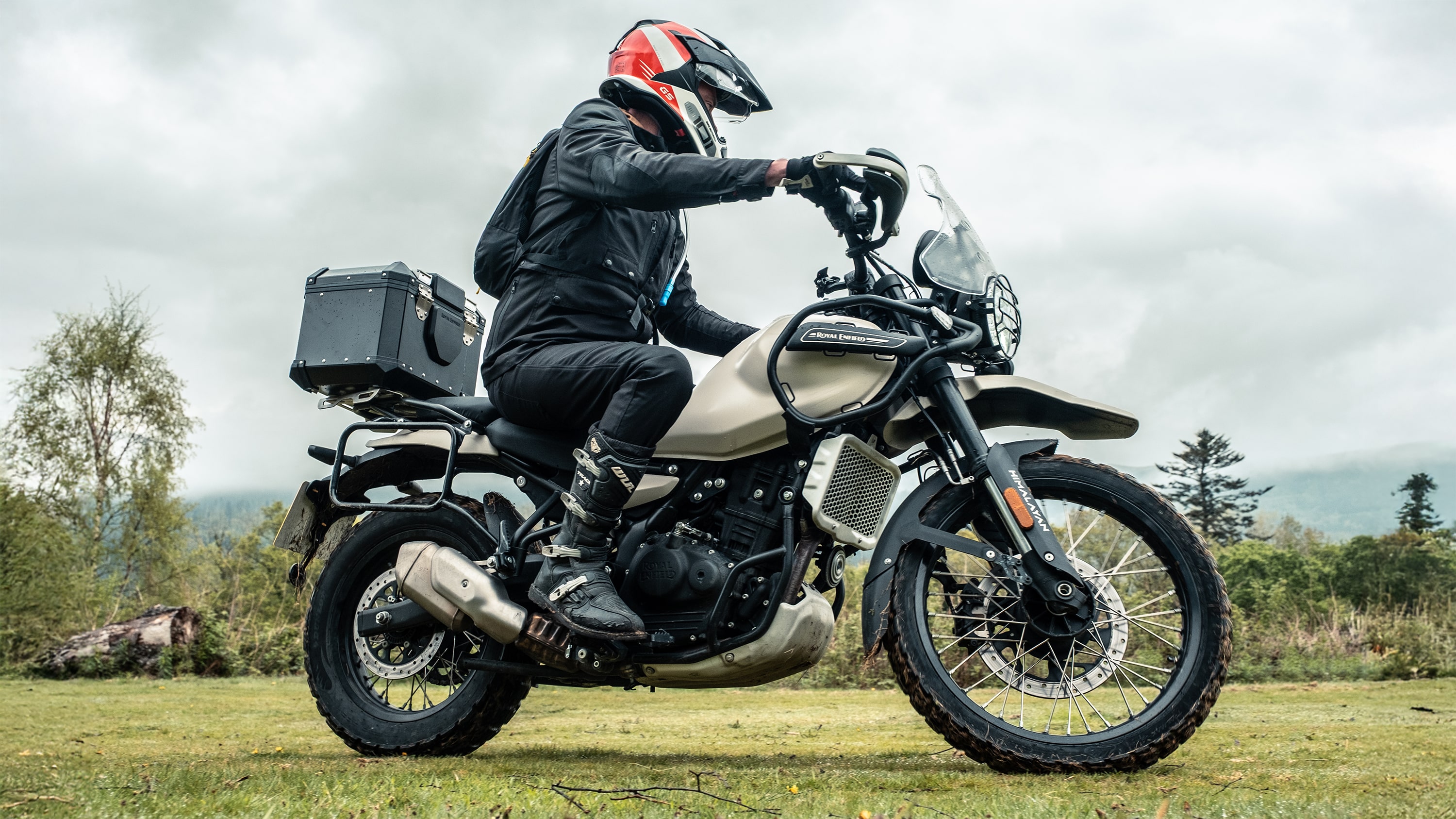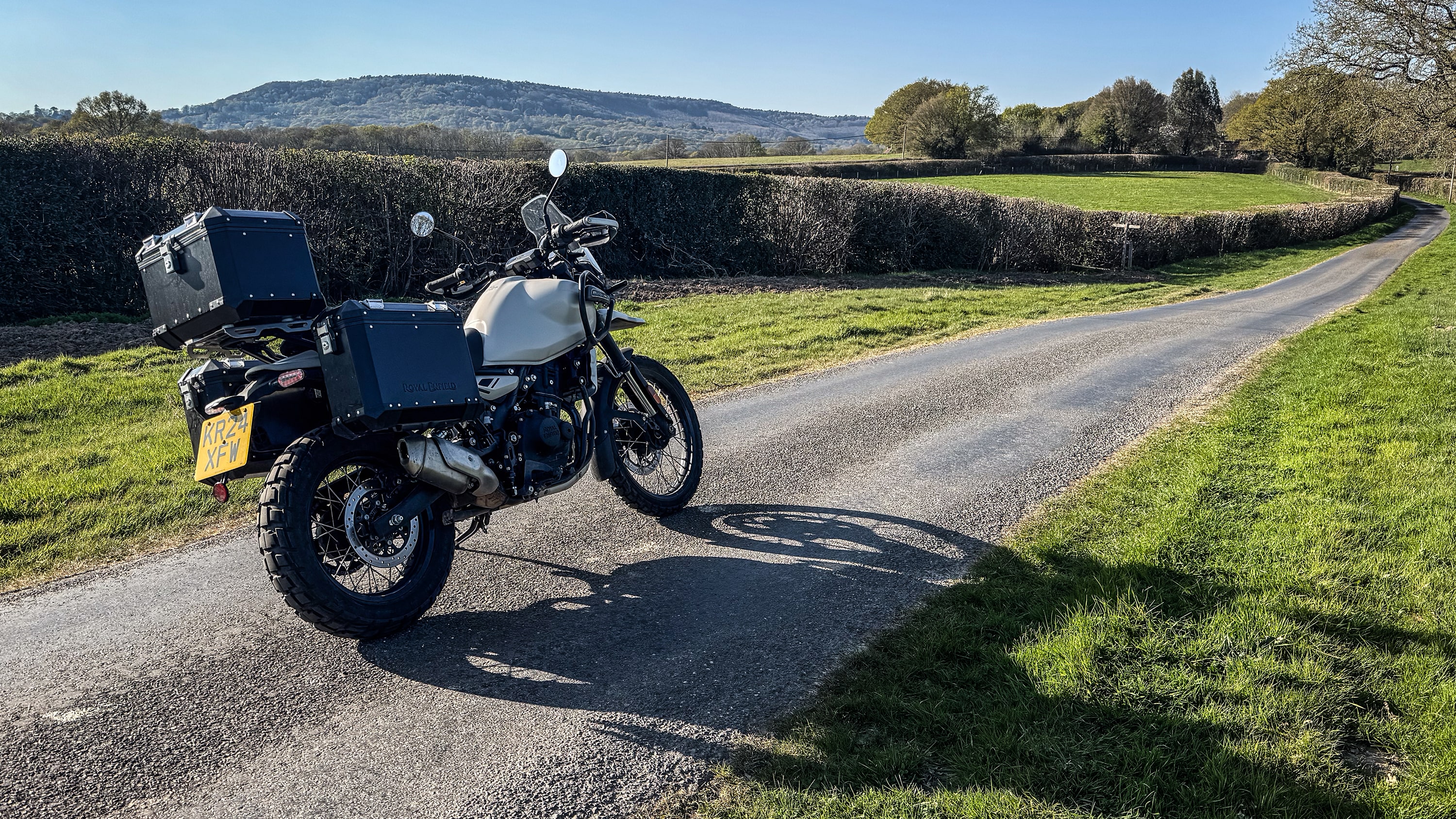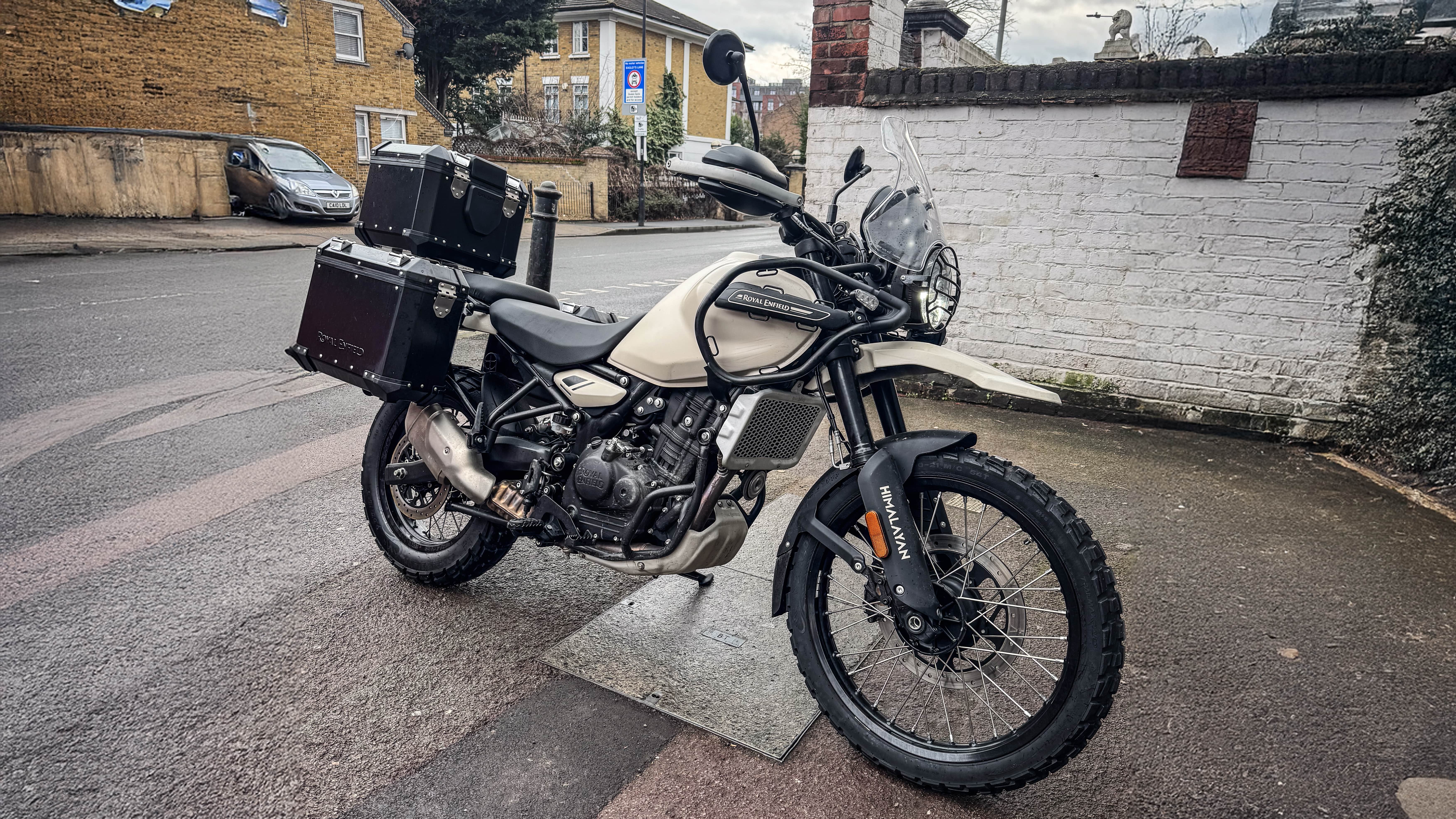
Royal Enfield Himalayan - long-term review
£5,750 / as tested £7,700 / PCM £99
Royal Enfield Himalayan: can you use a motorbike like a car?
Here’s the question I want to answer: can you use a motorbike like a car? That’s the experiment for the next six months or so. I’m going to live with Royal Enfield’s new Himalayan to see if four-wheeled transport can be successfully downsized into two without the whole thing turning into an episode of Casualty.
The daily grind awaits – commuting, supermarket runs, weekends away, and those trips that start with “I’m just nipping out” and end in a Doncaster depot of Evri to try and find the misplaced parcel. You know, real life. Not just the glossy brochures with a bike perched halfway up a volcano. Although… we want to do a bit of that too.
See, adventure bikes are everywhere these days. Like SUVs are for cars, they’re the motorcycling world’s breakout hit – sales up more than 11 per cent year-on-year this year – and everyone’s got the adventurous look. The Gore-Tex jacket. The knee-high buckled, squeaky boots. The Instagram handle with “ADV” somewhere in it.
These things are marketed as machines that’ll carry you to the ends of the Earth, across deserts, through rivers, possibly over the Darién Gap. In reality? Most don’t make it past the Watford Gap. Still, there’s a reason they’ve become the SUV of the bike world: upright riding position, commanding road presence, suspension that forgives the lunar surface we now call British roads. They make the everyday riding more comfortable, approachable – maybe even more fun. That’s the brochure dream. What’s the reality? I’m here to find out.
So why a Kaza Brown Himalayan? Because out of all the so-called adventure bikes, the wee Himi’s salt-of-the-Earth. While the competition is trying to be Dakar-ready cruise missiles with price tags to match, the Himalayan keeps it honest. It’s the people’s adventure bike. More specifically, India’s adventure bike. Where a BMW GS or Honda Africa Twin costs more than a family holiday, the Himalayan gives you the dream for less than £6k.
It’s very true to the cause: it’s not about speed or bragging rights on a spec sheet – it’s about going and doing the adventurous thing with as few worries as possible. No matter what. Which is why we’ve got one. To see if it can handle both London rush-hour chaos and a slightly idiotic plan to ride it across the actual Himalayas. Yep, those Himalayas. The jagged ones on the fuel tank. The ones where the roads disappear, the air gets thin, and riders become statistics.
The snag? This sort of bike is built to go off-road. And unlike a Land Cruiser or Defender with e-diffs, hill-descent control and terrain response modes, on a Himalayan the limiting factor is… me. I am Terrain Response. And my current setting is: Quite Scared. My off-road experience is limited and more than often the occasional gravel lay-by. Sand, rocks, deep ruts, livestock chicanes? Not so much. Still, I’m game to learn. YouTube shows me the Himi can do astonishing things; I just need to persuade it to do them with me on top. And get a bit braver.
So what we’ve got here is the second generation of Royal Enfield’s first-ever adventure bike. The original Himalayan launched in 2016 with an air-cooled 411cc engine and proved so capable that one ended up at the Earth’s geographic South Pole. Now it’s been heavily reworked and fitted with Royal Enfield’s first-ever water-cooled engine: a 452cc single-cylinder putting out 40bhp and nearly 30lb ft of torque. That’s up from 24bhp – like swapping dial-up internet for fibre broadband. They call it the Sherpa, which is exactly the sort of name you want when your plan involves altitude sickness.
For a 450cc, it’s not light. Other adventure bikes might be bigger, but lightweight is the holy grail off-road, and despite a new frame and lighter engine, the Himalayan still tips the scales at about 200kg fully fuelled. That’s before I’ve hung Royal Enfield’s hard panniers off it – essential for daily life and putting your laptop somewhere safe.
But the Himi is built like a tank. Steel everywhere, designed to be bent back into shape when you inevitably drop it halfway up a mountain pass. And it’s comfortable – properly comfortable. An adjustable two-piece seat, ergonomics that feel thought about, a decent windscreen, and suspension that’s soft (really soft) but better than the price tag suggests.
Up front is a 21in wheel, out back a 17, both wrapped in non-standard Dunlop Trailmax Raid 50/50 tyres because yes, we do have off-road plans. Suspension comes from a 43mm upside-down Showa fork with 200mm of travel (non-adjustable, but soft enough to make potholes feel like pillows), and a rear Showa shock with preload adjustment. Braking has been improved over the old bike too – 320mm front disc, 270mm rear, and switchable rear ABS for when the tarmac ends. It’s also throttle by wire. Nothing fancy. Just works. Which is the whole point.
Tech? Minimal, but present. A neat circular TFT screen that’ll display Google Maps via Royal Enfield’s app, toggled with a handlebar joystick. No heated grips, no heated seat, but the two-position seat height (825mm or 845mm) keeps it approachable. You can actually flat-foot it without being built like a basketball player.
Royal Enfield’s accessories catalogue lets you turn it into either a rally mule or a travel mule. Ours is somewhere in between – hand guards (essential), headlight grille (less so, but it looks good), adventure screen (saves your neck on the motorway), radiator guard, bash plate, and a set of panniers big enough to move house.
In London, loaded up like the last round of Buckaroo, the Himi gets nods from GS riders in petrol stations. People ask where I’ve come from. They look disappointed when I say Fulham rather than Finland. But here’s the surprise: for a 450, it’s not the dart-about-town machine I’d imagined. It’s got the torque and six gears to keep up with traffic, but the weight means you’re lumbering compared to the kamikaze scooters. That said, 70mph cruising is now effortless – something the old bike couldn’t claim.
Faults? The LED headlight is about as effective as a glow-worm in a jam jar. And there’s still a bit of that Royal Enfield ‘character’ – the kind where you find yourself tightening bolts that weren’t loose yesterday. But that’s part of the charm.
What I didn’t expect commuting on a bike was how much it changes your daily rhythm. There’s so much pre-planning, sweating and faff. Boots a pain to get on? You’ll be late. Got on and left your gloves? You’ll be late. Cold outside? Wrap up and arrive at the office looking like Rick Waller on a jetski. But the commute is suddenly more involving, more fun. Filtering through traffic is deeply satisfying – unless you’re next to a Tesla on autopilot, which is frankly terrifying.
Let’s be honest – being an “urban adventure biker” is a bit of an oxymoron. The real fun begins when the tarmac ends. So to the mud we must go. Lessons will be learned. Bash plates will be used. And I suspect those hand guards will earn their keep sooner rather than later.

Featured

Trending this week
- 2026 TopGear.com Awards
The very best cars of the year: welcome to the 2026 TopGear.com Awards
- Long Term Review
Six-month verdict: should you buy a Jaecoo 7?






